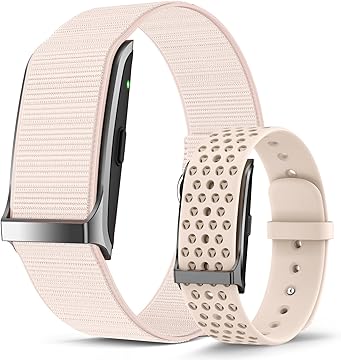
Before Polar Whoop was already in court with Lexqi
While Polar made headlines, it turns out Whoop’s recent legal battle over fitness band design started earlier. A few weeks before filing its case against Polar, the company launched a lawsuit against Shenzhen Lexqi Electronic Technology in Massachusetts.
That case, filed on September 22, centers around the same core issue. Whoop argues that Lexqi copied the signature look of its screenless fitness tracker and began pushing knockoff versions into the U.S. market. According to the complaint, Lexqi sells the product under various Amazon storefronts including SGJIK and EGQINR, using what Whoop describes as “a wholesale copy” of its band.

Cease-and-desist letters ignored
The Massachusetts lawsuit states that Whoop sent cease-and-desist letters back in July 2025. Rather than backing off, Lexqi allegedly doubled down. Several storefronts claimed Lexqi as the source of their products and even produced “authorization letters” signed by the company giving global sales rights.
Whoop says this shows a clear intent to continue infringing, and it has asked the court for broad injunctive relief, damages and disgorgement of profits. The complaint also reveals that Lexqi filed a U.S. design patent in 2024 and secured FCC approvals for its band. That, combined with its Amazon activity, paints a picture of a coordinated effort to distribute in the U.S. while creating an appearance of legitimacy.

The trade dress argument
At the center of both the Lexqi and Polar cases is the same legal question. Can the design of Whoop’s screenless band be treated as a protectable trade dress under U.S. law? Whoop says yes. It describes the claimed trade dress as a three-dimensional design featuring a U-shaped clasp with the word Whoop on the crossbar, hinged sides over a rectangular sensor, and a strap that wraps flat against the wrist. The logo itself is not part of the claim.
The company argues that this design has become an indicator of source. It points to a decade of investment in making the band recognizable. That includes print and TV ads, social media campaigns and athlete endorsements. Whoop even highlights moments like Prince William wearing the strap during the 2024 UEFA EUROs, where viewers identified the product without seeing the brand name. It also cites Reddit threads and Amazon reviews as evidence of actual consumer recognition.
Essential reading: Top fitness trackers and health gadgets
What it does not include is quantitative data. There are no consumer surveys or detailed sales figures in the complaint. That could make it harder to prove the claimed secondary meaning.
Since then, more Polar details have emerged
When we covered the Polar case earlier this week, many of these details had not yet surfaced. Since publishing that article, it has come to light that according to the complaint, multiple media outlets had already referred to the Polar Loop as a “Whoop dupe” by the time it launched. More importantly, Whoop claims Polar received a cease-and-desist letter in September 2025 but continued selling the product anyway.
That decision is now part of the complaint, which frames Polar’s actions as willful infringement and unfair competition. While the Polar Loop doesn’t use a storefront-based distribution model like Lexqi, both lawsuits claim similar visual overlap with Whoop’s design.
What this all adds up to
With two lawsuits now active and both based on the same trade dress, it’s clear Whoop is going beyond just reacting to competition. This looks more like a push to lock down the visual identity of its band. It will be interesting to see if the company goes after other companies which have recently produced similar looking devices.
Whether courts ultimately side with Whoop will depend on how they view the design itself. If it’s found to be distinctive and non-functional, Whoop may gain legal ownership over how that minimalist look can be used.
At the same time, Lexqi’s attempt to file a U.S. design patent and gain FCC approval shows how Chinese manufacturers are getting more sophisticated. It is not just about copying products. It’s about using U.S. systems to protect those copies. That makes enforcement tougher and forces brands like Whoop to fight on multiple fronts.
With Garmin also facing lawsuits from Suunto and Strava, it’s starting to look like visual identity and UI design will be hot legal territory going forward. Oura may have started this trend in the smart ring space. Now it’s spilling into wristbands and wearables more broadly.
Sources: Pacermonitor, Thefashionlaw
Subscribe to our monthly newsletter! Check out our YouTube channel.
